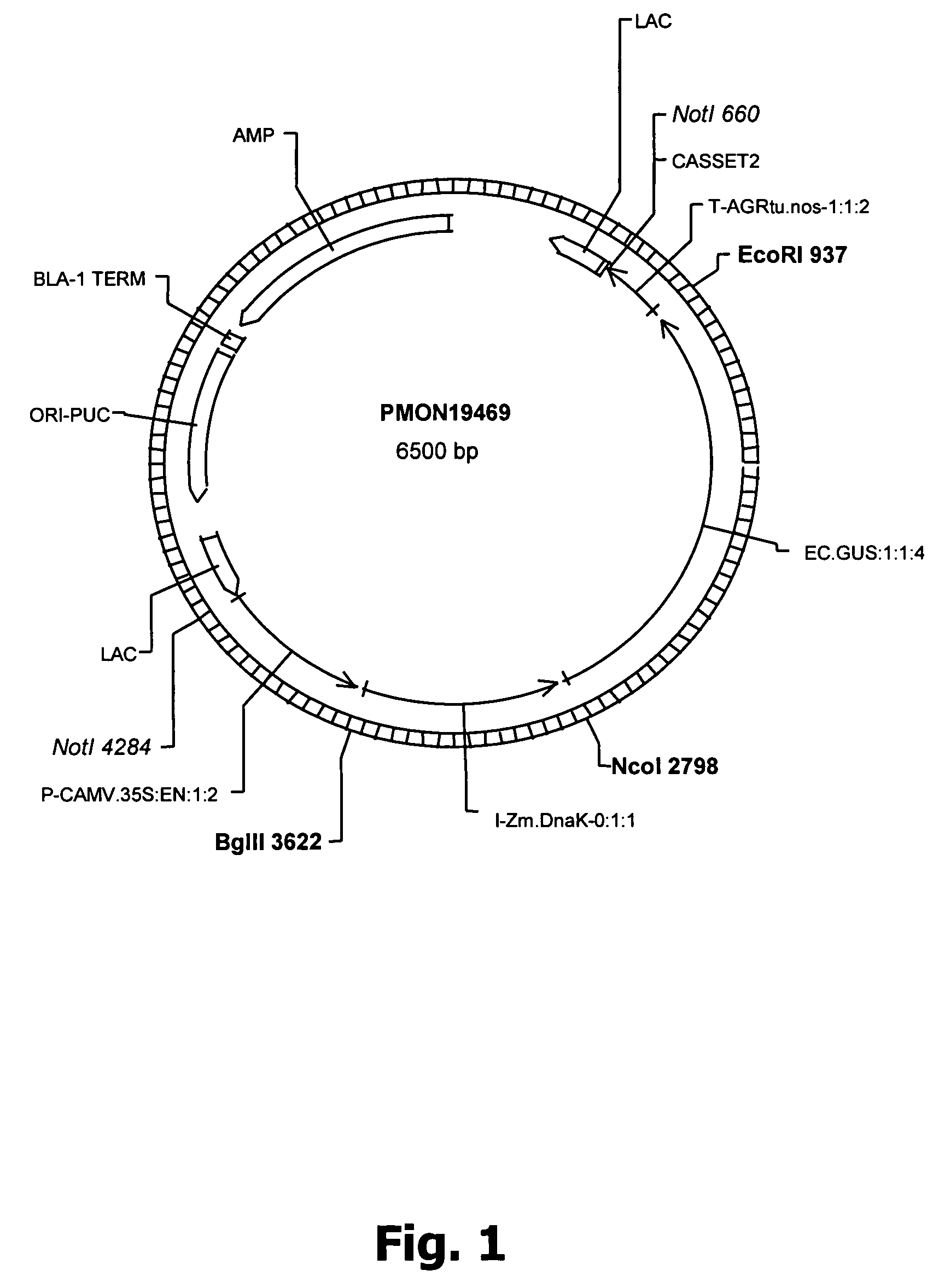Method for altering nitrogen or oil content of seeds by down regulating AGL11 expression or activity
a technology of agl11 and seed oil, applied in the field of plant genetics and biochemistry, can solve the problems of affecting yield or other agronomic traits, affecting the yield of high protein lines, and most high protein lines developed this way, and achieve the effect of increasing the yield of plants
- Summary
- Abstract
- Description
- Claims
- Application Information
AI Technical Summary
Benefits of technology
Problems solved by technology
Method used
Image
Examples
example 1
[0157]This example describes the identification of high protein mutants from an Arabidopsis T-DNA insertion mutant population.
[0158]A T-DNA insertional mutant population of Arabidopsis was generated as described by Galbiati et al., Funct Integr Genomics, 1:25–34 (2000). Over 6,000 lines of the T-DNA generated mutant population were established. Individual Arabidopsis plants were grown in the growth chamber or greenhouse under 18 hours or 24 hours of light at 200–300 μE. The temperature of the growth chamber and greenhouses was in the range between 20–28° C. The plants were watered with deionized water. Seeds from each line were screened for alteration in nitrogen to carbon (N / C) ratio as compared to wild type Arabidopsis thaliana ecotype Columbia. Approximately 5 mg of seeds from each line were analyzed for nitrogen and carbon levels using a NC 2500 combustion nitrogen / carbon analyzer (CE Elantech, Inc., Lakewood, N.J.).
[0159]Duplicate batches of 5 atropine standard samples (338–244...
example 2
[0163]This example sets forth a method of protein and amino acid analysis of seed using HPLC and near infrared measurements.
[0164]For seed protein analysis, small bulk samples consisting of 50–100 seeds for each treatment were measured using near infrared reflectance spectroscopy (InfraTec model 1221, Teccator, Hogannas, Sweden). This procedure was based upon the observation that a linear relation exists between the absorption of near infrared radiation and the quantity of chemical constituents comprised in a typical seed sample. Prior to analyzing unknown samples, spectral data was collected with calibration samples that were subsequently analyzed using a primary analysis technique. The primary technique used was nitrogen combustion (Murray, I., and P. C. Williams, 1987, Chemical Principles of Near-Infrared Technology, in Near-Infrared Technology in the Agricultural and Food Industries, P. Williams and K. Norris eds.). A multivariate model was developed using the spectral data from...
example 3
[0168]This example sets forth the identification and sequencing of the hpr6 mutant gene.
[0169]DNA was isolated from the Arabidopsis thaliana hpr6 mutant by methods known in the art of molecular biology (see, for example, Sambrook et al., supra). The hpr6 mutant gene (AGL11) was identified by isolating the flanking region of T-DNA using the GenomeWalker™ kit (BD Biosciences Clontech, Palo Alto, Calif.) following the conditions set forth by the manufacturer. The primers for the PCR reactions were as follows:
[0170]
PrimerIDPrimerNamePrimerSequenceS0873D10f35(SEQ ID NO: 1)Adaptor primer 1AP1(SEQ ID NO: 2)S0873D11n35(SEQ ID NO: 3)Nested adaptorAP2(SEQ ID NO: 4)primer 2
[0171]The isolated DNA produced by the PCR reactions were sequenced using standard sequencing methodology known in the art of molecular biology. The so-identified DNAs were sequenced and provide a DNA sequence as illustrated in SEQ ID NO: 5. The SEQ ID NO: 5 had 100% sequence identity with a portion of the sequence of the AG...
PUM
| Property | Measurement | Unit |
|---|---|---|
| Concentration | aaaaa | aaaaa |
| Content | aaaaa | aaaaa |
Abstract
Description
Claims
Application Information
 Login to View More
Login to View More - R&D
- Intellectual Property
- Life Sciences
- Materials
- Tech Scout
- Unparalleled Data Quality
- Higher Quality Content
- 60% Fewer Hallucinations
Browse by: Latest US Patents, China's latest patents, Technical Efficacy Thesaurus, Application Domain, Technology Topic, Popular Technical Reports.
© 2025 PatSnap. All rights reserved.Legal|Privacy policy|Modern Slavery Act Transparency Statement|Sitemap|About US| Contact US: help@patsnap.com



